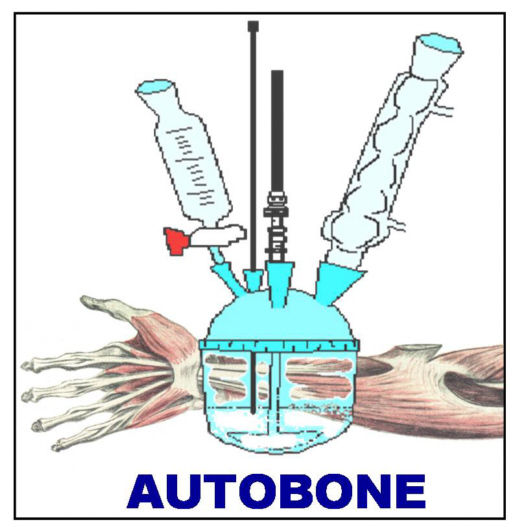This website uses cookies so that we can provide you with the best user experience possible. Cookie information is stored in your browser and performs functions such as recognising you when you return to our website and helping our team to understand which sections of the website you find most interesting and useful. More information in our Privacy Policy
AUTOBONE
Production unit for the decentralized engineering of autologous cell-based osteoinductive bone substitutes
Principal Investigator: Anna Tampieri
Involved Personnel: Simone Sprio, Monica Sandri
Starting date: 24 October 2003
Duration: 48 months
Total funding: 4.818.000 €
Action: FP6-NMP3-CT-2003-505711-1
Project Coordinator: Anna Tampieri (CNR-ISTEC)
Consortium: 12 partners from 6 European Countries
Partners: CNR-ISTEC (IT), Danish Technological Institute (DTI, Denmark), Fin-Ceramica Faenza (Italy), University of Basel (UHBS, Switzerland), Laboratoire d’Evaluation des Matériels Implantables (LEMI, France) Millenium Biologix (Switzerland), Fundacion Tekniker (Spain), Presens Precision Sensing (Germany), Department of Orthopedic – Odense University Hospital (Denmark), Department of Oncology, Biology and Genetics – University of Genova –(DOBOG, Italy), Institut National Polytechnique de Toulouse (INPT, France), Johannes Gutenberg University of Mainz (Germany).

Bone is among the most frequently transplanted tissues and autography account for the majority of bone graft procedures. However, auto grafts always require a secondary surgery adding high costs to health services increase patient morbidity and are available in very limited quantities. Therefore, there is widespread interest around the world for programmes to rebuild and restore function of degenerative tissue using artificial implant materials. The enormous need for bone grafts and the recent progresses in biomedical and biomaterial sciences have stimulated the rapid growth and expansion of a new field: bone tissue engineering. However, this approach presents important limits to the transfer from an academic to a routine clinical environment: high cost, difficulties in transferring biological samples between hospitals and centralized “cell factories”; reproducibility due to lack of standards. The aim of this project is to combine the developments in the areas of tissue engineering based on materials and 3D scaffolds development with largely laboratory and few commercial activities in the field of bioreactors and transpose the concepts of tissue engineering and regeneration of the frontiers of new developments: the automated production of antilogous bone replacement materials The goal of this project is to develop a bioreactor that would be set-up within the confines oaf hospital and which would be used to homogenously activate specially designed porous matrices with stem cells from harvested bone marrow aspirates of the patient to produce antilogous hybrid bone graftmaterials.This target will be achieved through the following scientific and technical objectives:1) design and production of innovative bioreactors,2) design and production of novel biomaterials and scaffolds architectures tailored for both bioreactor use and bone tissue engineering,3) validation of the approach in preclinical animal studies.
